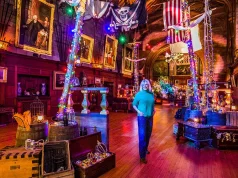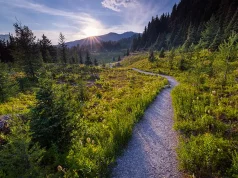As we embarked on our second voyage around Iceland, we set out to explore what lies beyond the well-trodden path of the Ring Road—an iconic route that loops around the entire country, connecting many of its most celebrated natural greatest hits. Deviating from this route isn’t easy; especially when so much of Iceland’s beauty lies right along this distinct path. Yet, with a tourism boom bringing six times more visitors than residents, venturing off felt more necessary than ever. During our first exploration of Iceland in 2017, we experienced an empty paradise—no traffic, no tourists, just locals sharing insights about hidden gems we had vowed to visit on our next trip. Fast forward to the present, and we were at long last able to act on that coveted advice.
This time, our journey led us to the often-overlooked Eastern Fjords—a 120-kilometer (75-mile) coastal stretch of sheer cliffs, glacial rivers, and rugged wilderness. On our first visit, harsh weather and low-hanging fog had obscured the region’s beauty. This time, we hoped for better circumstances, while remaining all too well aware that Iceland’s mercurial weather seldom aligns with any of its travelers’ desired schedules. Regardless, our clockwise route from the capital city, Reykjavík was set, leading us to the remote and enigmatic destination of Óbyggðasetur.
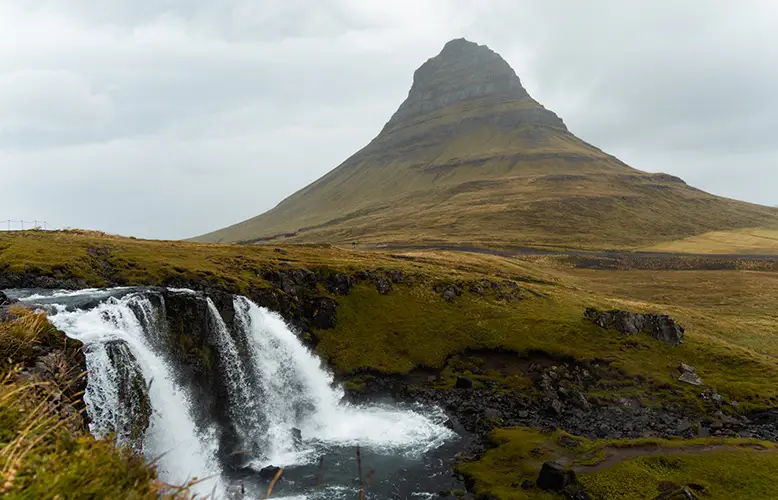
We ventured to the Snæfellsnes Peninsula, home to Kirkjufell—easily the most photographed landscape in Iceland and one we can never resist revisiting. In Akureyri, Iceland’s second-largest city, we had plans to dive with marine legends, but weather thwarted our hopes. However, in Húsavík, we lucked into a day of calm seas, allowing us to embark on a whale-watching excursion and a remote trek on Flatey Island, far removed from typical trails.
The journey from Húsavík to the Eastern region was anything but smooth or serene. A sudden snowstorm turned the Ring Road into a treacherous, icy path, making the prospect of venturing off-route feel like a risky gamble. Yet, we managed to reach our destination just before being stormed in. This remote region, Austurland, is home to only 3.2% of Iceland’s population and is defined by its fishing villages, centuries-old farmland, and fjords that cut dramatically into the earth. Inland, snow-capped mountains rise above an evolving landscape where ongoing forest restoration aims to reclaim what was lost to early settlers.
Within just three generations of settlement, Iceland lost 80% of its forests as land was cleared for farming. In the highlands, researchers have uncovered evidence of these ancient woodlands through traces of tree roots, offering a glimpse into the country’s greener past. Today, only about 1% of Iceland is forested, but reforestation efforts are certainly underway—especially here. Farmers can receive grants to purchase land and plant trees, with Siberian and Alaskan species playing a key role in the restoration process. Although some express concerns about introducing non-native species, Iceland has avoided many of the ecological challenges faced by other countries, like New Zealand.
The often-overlooked crown jewel of East Iceland is its highlands—a vast, uninhabited expanse of raw wilderness that feels worlds away from the Ring Road. Among these remote landscapes, the aptly named Wilderness Center offers a rare haven, immersing visitors in a setting that feels untouched by time. Dominating the view is Herdubreid Mountain, an iconic peak rising 1,682 meters (5,518 feet) above the surrounding Odadahraun lava field, one of the largest in Iceland. From this vantage point, the grandeur of Snӕfell, Iceland’s highest freestanding mountain, and Vatnajökull, Europe’s largest glacier, come into focus. These behemoths both serve as a reminder of the region’s breathtaking scale and diversity. Nearby, the cascading waterfalls of Litlanesfoss and Hengifoss add to the otherworldly beauty, their dramatic basalt columns and striking heights leaving their spectators with a lasting impression.
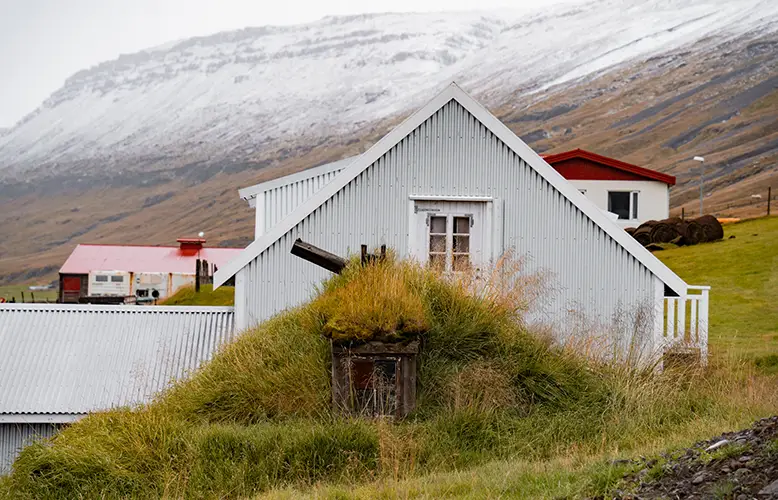
As the rain began to set in, we arrived at the Wilderness Center just in time to witness one of Iceland’s oldest and most cherished highland traditions beginning: the Réttir. Every September, communities across the country come together to round up sheep that have roamed freely across the mountains and valleys. Divided into regions, groups of farmers work together to retrieve their flocks, demonstrating a deep commitment to raising free-ranging animals in contrast with more conventional industrial livestock practices. This tradition is equally about gathering sheep as it is about preserving a way of life that’s been passed down from the generations. Icelanders take immense pride in their lamb, which they confidently regard as the best in the world, largely thanks to this unique process.
Reaching the Wilderness Center meant navigating through the action of Réttir: engulfed by sheep, riders on horseback wrangling them, farmers walking determinedly, and dogs working with precision to keep the flocks in line. Our 4×4 trailed behind, allowing us to take in the beauty and precision of this collaborative effort. Along the way, we learned about the réttarball, a lively celebration that follows the day’s hard work. Once the sheep are sorted, the focus shifts to music, dancing, and camaraderie. Amidst the flurry of activity, surrounded by sheep and the unmistakable spirit of tradition, we felt as though we’d entered a different world—one far removed from anything we were accustomed to. This was Iceland in its purest form, a place where the rhythms of life and land intertwined, offering an experience of culture, history, and connection that felt timeless.
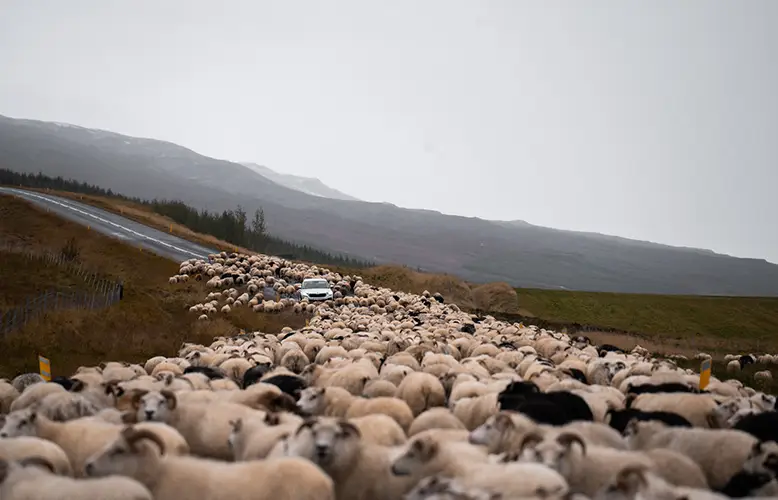
Naturally, this place offered a stark contrast from the capital on Iceland’s west coast. Here, time slows, and history comes alive as you step into a version of Iceland that feels eons from modernity. With limited cell reception and the solitude of visiting during shoulder season, we found ourselves enveloped in the peace and remoteness of the highlands. Situated at the end of the road, the center is surrounded by untamed wilderness, part of the most extensive wildlands in Northern Europe.
Here, every detail is thoughtfully curated to honor Iceland’s past, blending authenticity with storytelling to create an experience unlike any other you can find in the country. Mornings began with homemade breakfasts in the farmhouse kitchen, where meals were prepared right in front of us using local ingredients. Our accommodations, carefully restored to preserve their historical charm, made us feel as though we were in a “living museum,” yet one with the comfort of home. The on-site museum delved into the region’s history, painting a vivid picture of the resilience required to thrive in the highlands. And the dinners were made of locally sourced produce, yet another historical example of the foods near and dear the Icelandic.
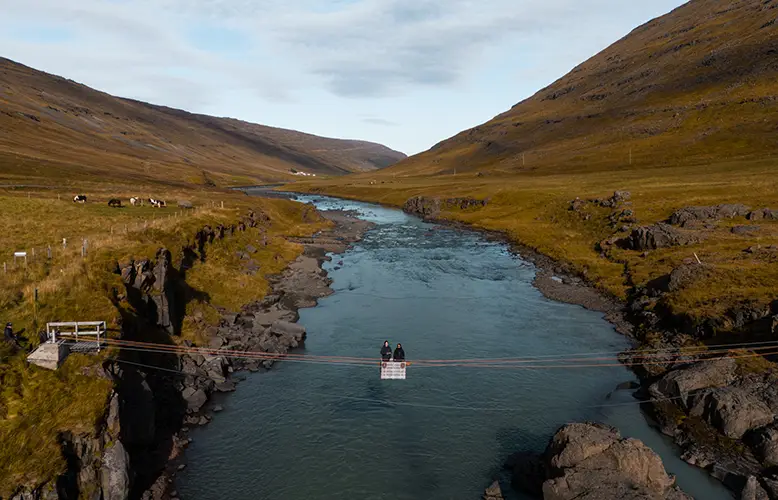
But outside the confines of the village, the wilderness wouldn’t stop calling to us. Icelandic horses, famed for their size, resilience, gentle nature, and unique gait, took us to the nearby famous cable bridge—a rustic wooden cart suspended high above a glacial river. Crossing the bridge by winching yourself across is an adventure in itself. The reward on the other side was a visit to an eerie yet fascinating abandoned farmhouse. This haunting structure was a reminder of the challenges Icelanders once faced in surviving the rugged conditions of this remote land.
What we hadn’t anticipated was the midnight spectacle that left us in awe of the great north, and reflecting on our sheer good fortune. While we knew the northern lights could be visible as early as September, we didn’t realize we were in one of Iceland’s prime locations to witness their vibrant display. And the aurora activity was unusually strong just in time for us. Iceland’s notoriously unpredictable weather seemed to align perfectly, clearing the skies just in time to reveal ribbons of electric pinks, greens, and purples. Every night, from around 9pm to 2am , we were treated to a celestial performance that felt otherworldly. Seeing those lights for the first time was a feeling I still struggle to find the appropriate words for.
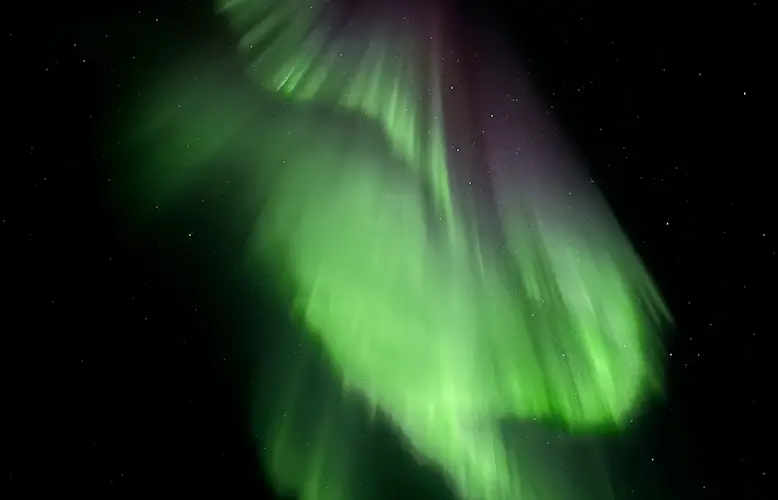
The northern lights, or aurora borealis, are born from a fascinating cosmic interplay. When charged particles from the sun collide with Earth’s upper atmosphere at nearly the speed of light, our planet’s magnetic field steps in to protect us, funneling these particles toward the poles. There, they interact with atmospheric gases like oxygen and nitrogen, releasing energy in the form of the light patterns we witnessed. While they’re best viewed in near-total darkness, their vivid beauty often defies what the naked eye can capture, with cameras enhancing the full spectrum of their magic. Each moment spent beneath those dancing lights felt like a gift from nature—one that will forever remain etched in our memory of Iceland.
On our last day in the wild, we ventured to Skriðuklaustur, which is a historical monument of the region. Once a medieval monastery and later the home of Icelandic author Gunnar Gunnarsson, it now serves as a heritage hotspot. Archaeological excavations from 2002 to 2012 uncovered artifacts and human remains that reveal the lives of those who lived and worked here, representing nearly 1% of Iceland’s population during the medieval period. Modern tools utilizing augmented reality and drone mapping, allow those who pass through the chance to engage with this history in new ways.
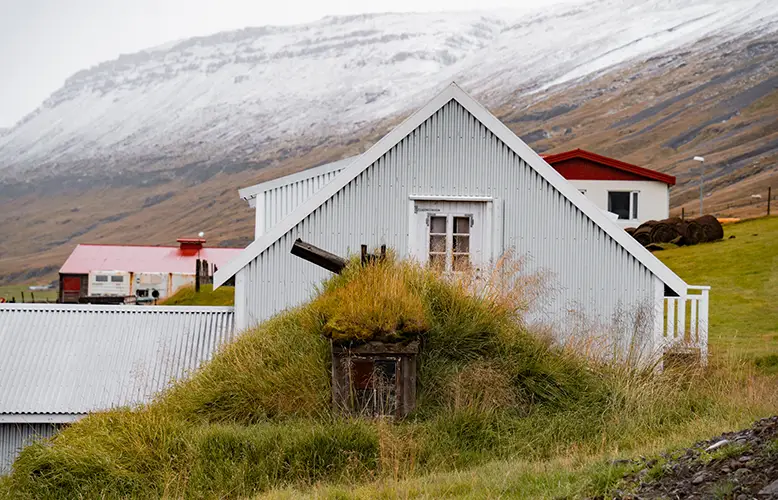
“Skriðuklaustur is more than just a museum,” says Skúli Björn Gunnarson, who is the Managing Director of the Gunnar Gunnarsson Institute, which has operated the museum and historical site for the last two decades. “It’s a space where history, literature, and the local identity come alive. We aim to inspire visitors, not just to learn about the famous author Gunnar’s work, but to connect with the region’s stories in a way that stays with them long after they leave.”
And the center certainly honors Gunnar Gunnarsson, whose works like The Good Shepherd and The Black Cliffs resonate for their detailed storytelling and sharp critiques of society. After nearly two decades abroad, Gunnar returned to this valley to build his mansion, which he later donated to Iceland’s government. “His writing captured the spirit of this land,” Skúli explained. “By showcasing his legacy, we hope those who visit leave inspired to read his books and reflect on the connections between people and place.”
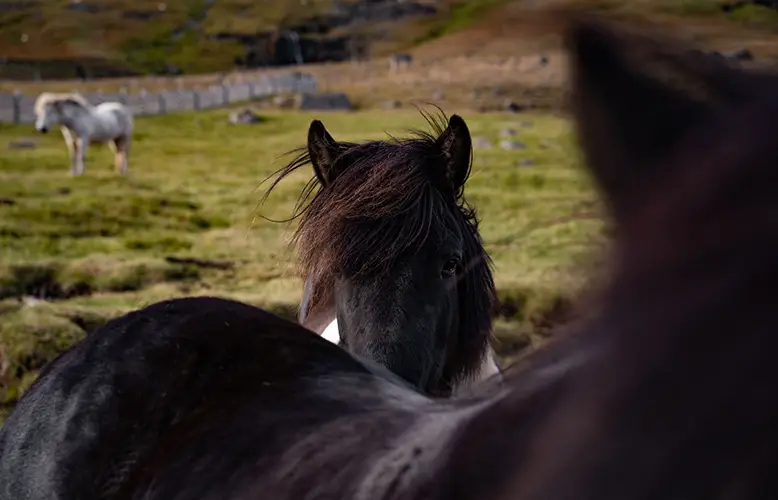
Skriðuklaustur stands as both a historical landmark and a lens for examining East Iceland’s ongoing struggle to balance development and preservation. The nearby Kárahnjúkar hydroelectric power station embodies this tension. While supporters saw it as a means to attract residents and boost regional growth, critics opposed its placement within an untouched highland wilderness. “Decisions about our land are never easy,” Skúli noted. “We rely on our natural resources, but progress must not come at the expense of what makes this region special.”
Though the plant now powers many towns in the region, some believe it has hindered further government investment in infrastructure like roads and tunnels, leaving the area in a state of stagnation. Similar debates have emerged over proposed wind farms, with farmers and operators voicing concerns about their impact on the landscape and tourism. Skúli advocates for using tools like virtual reality to help communities visualize potential outcomes and make informed decisions. By fostering collaboration, Iceland has a rare opportunity to achieve a delicate balance between progress and preservation, ensuring its wilderness continues to thrive.
As we reluctantly left the highlands, fueled by what might have been the best lamb and mushroom soup we’d ever tasted, we made our way toward those mystical Eastern Fjords and the southern coast. Our departure wasn’t without its delays though. Sheep had taken over the landscape once again, blocking our path as families worked together to sort them into their designated areas. Witnessing this age-old tradition in action, yet again, brought us closer to the essence of East Iceland, a place so far removed from what we know, yet deeply grounded in its simplicity and connection to the land.
Passing through Egilsstaðir, the largest town in the East, we were eager to revisit the upcoming stretch that had been hidden in clouds during our first expedition here. This time, Mjóifjörður—a remote town of just 42 residents—revealed itself in all its glory. The journey to reach it was nothing short of breathtaking, with winding roads that twisted through a valley before opening up to dramatic cliffs, cascading waterfalls that were even grander due to the recent rain, and a sense of isolation that felt uniquely Icelandic. With snow still covering the ground from recent storms, it was easy to understand why this route is impassable in winter, its steep drops and narrow paths requiring nerves of steel to navigate.
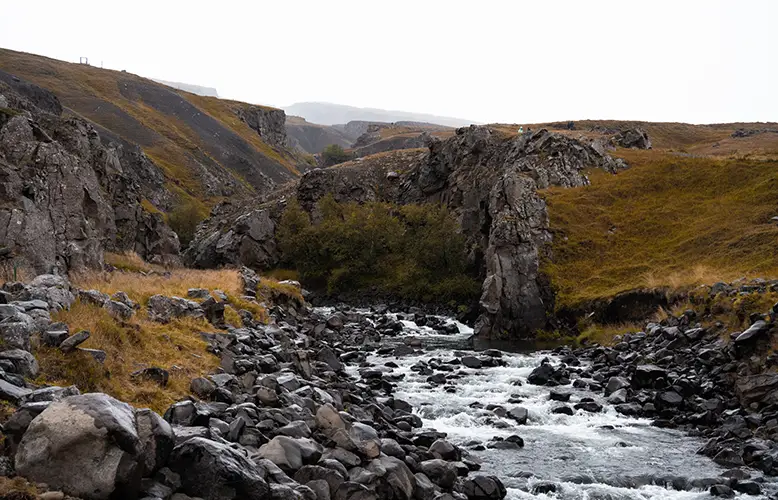
Exploring the less-trodden paths of Iceland is what makes a trip here so extraordinary. The east, with its fjords, highlands, and tightly knit communities, offers a sense of discovery that’s increasingly hard to find in the more tourist-heavy areas. This journey reminded us why Iceland continues to call us back—and why East Iceland, in particular, is a region worth exploring for anyone seeking a deeper connection to a wild and ancient land.


